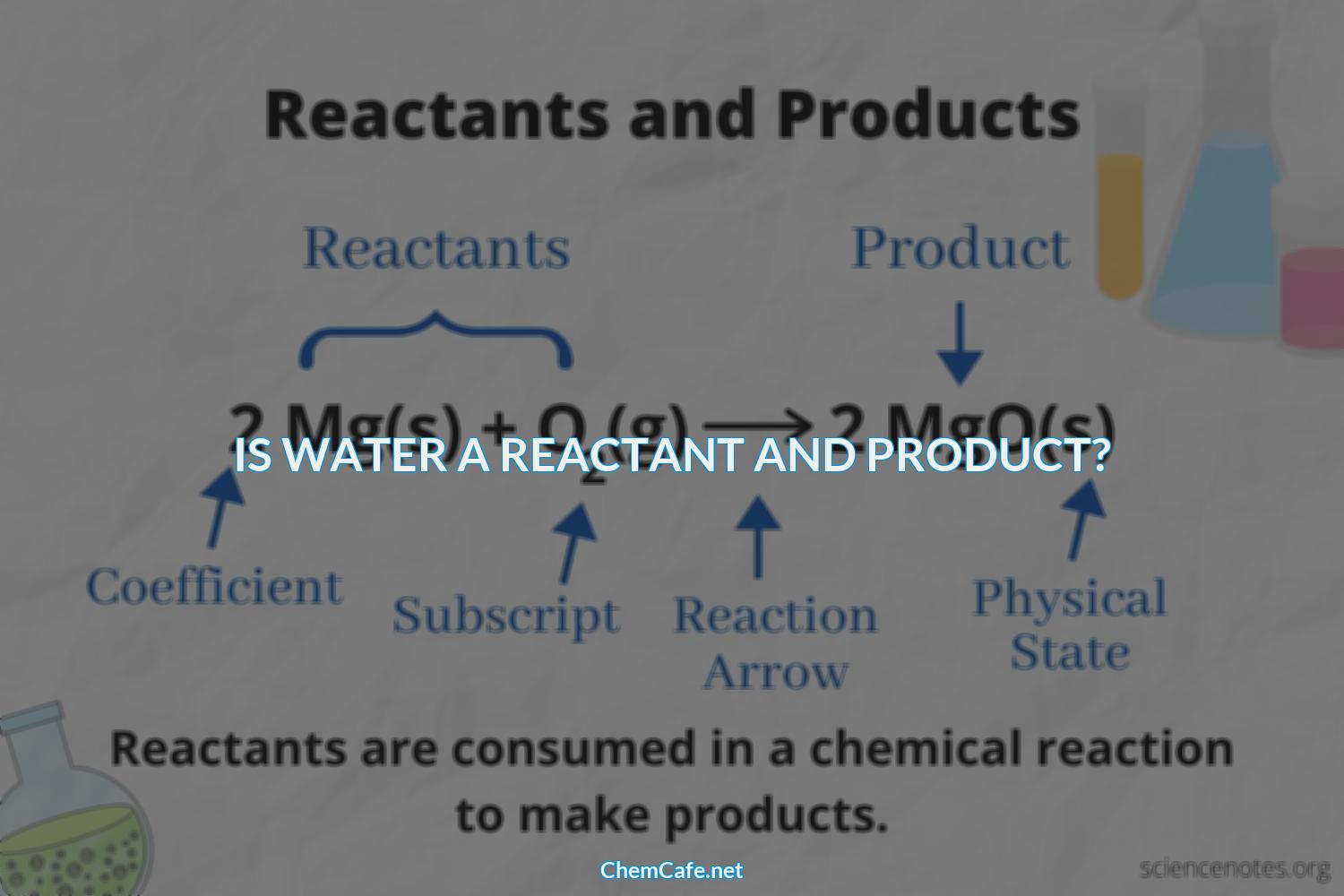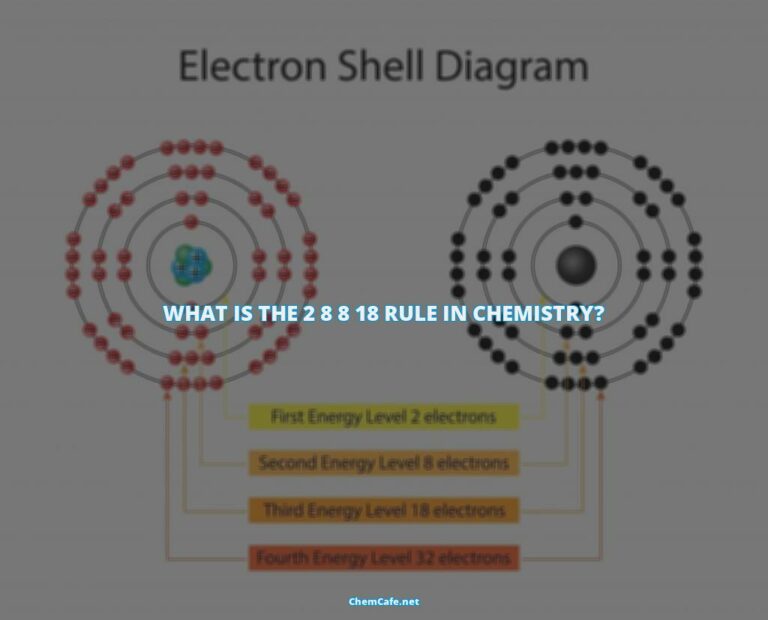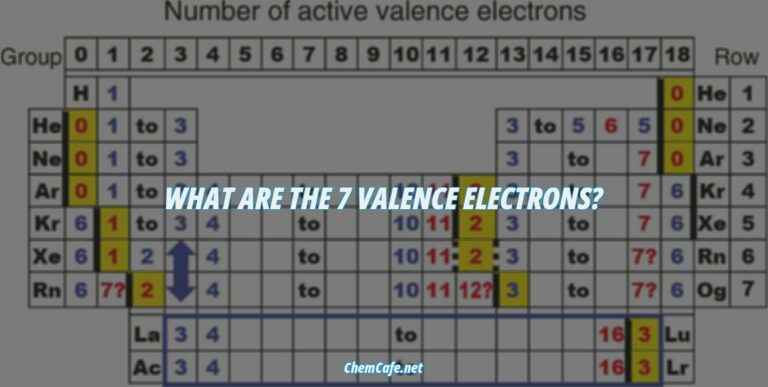Water is a vital component of our daily lives, but did you know that it can also be used as a reactant in chemical reactions? That’s right, water can be used in a variety of ways in different types of reactions, from hydrolysis to precipitation to exothermic and endothermic reactions. In this article, we’ll explore the roles of water as both a reactant and product in chemical reactions, and how different elements interact to form water molecules.
Water is commonly used as a reactant in various chemical reactions. The simplest of these is known as the hydrolysis reaction, wherein water is used to separate chemicals. This reaction takes its name from the Greek words “hydro” and “lysis”, which mean “water” and “to unbind”, respectively. In simpler terms, hydrolysis is the process of breaking down substances by adding water.
Water is also frequently used as a product in different types of reactions. For example, a precipitation reaction produces solid precipitates or suspensions when two different chemicals react. Similarly, a synthesis reaction produces larger molecules than the reactants it utilizes. Water is also a product in exothermic reactions, where the potential energy of the products is lower than that of the reactants. On the other hand, endothermic reactions produce products with higher potential energy than the reactants.
As a reactant, water requires two elements: hydrogen and oxygen. When these two elements combine, a single compound molecule of water is formed. This reaction is unique in that only two elements are involved and the result is a single product.
In conclusion, water is a vital component of chemical reactions, both as a reactant and product. It can be used in hydrolysis reactions to separate chemicals, precipitation reactions to produce solids, and exothermic and endothermic reactions to produce different energy levels. Water molecules are made up of two elements: hydrogen and oxygen, and when these elements come together, a single water molecule is created.
Is water a reactant and product?
Water is a common chemical compound found in nature. It is essential for life, and it is also used in a variety of chemical reactions. Water can be both a reactant and a product in a chemical reaction.
Water as a Reactant
Water is frequently used as a reactant in different reactions. The simplest chemical reaction in which a water molecule is a reactant is known as hydrolysis reaction. The word hydrolysis comes from the Greek word “hydro”, which means water, and “lysis”, which means “to unbind”. In practical terms, hydrolysis means the act of separating chemicals by adding water.
Types of Reactions Where Water is Used as Reactant
Water is used as a reactant in different types of chemical reactions. These include:
- Precipitation Reactions: Precipitation reactions produce solid precipitates or suspensions.
- Synthesis Reactions: Synthesis reactions produce larger molecules than reactants.
- Exothermic Reactions: The potential energy of the products of these chemical reactions is lower than that of the reactants.
- Endothermic Reactions: These reactions’ products have higher potential energy than the reactants.
Example of Reactants and Products
In a reaction, reactants are what you start with. They differ from what you get after the reaction takes place. For example, when hydrogen and oxygen react together, they form water. The equation of this reaction is as follows:
2H2 + O2 → 2H2O
We can take the same example to understand the concept of a product in a chemical reaction. Here, the product we obtain is water. Molecules of both hydrogens and oxygen combine to form a single compound molecule of water. This equation only has one single product as only two chemicals react with each other to form one compound.
Water is a vital component in many chemical reactions. It can act as both a reactant and a product. In many reactions, the reactants can be different compounds, and the products can be a single compound or multiple compounds. It is important to understand the reactants and products involved in a chemical reaction in order to understand the reaction itself.
Is water a reactant or product?
When it comes to chemistry, it is essential to understand the concept of reactants and products. Reactants are the starting materials that are used to form the products of a chemical reaction. Similarly, products are the substances that are formed as a result of a chemical reaction. Many chemical reactions involve the use of water as a reactant or product. So, is water a reactant or product?
Water as a Reactant
Water is most commonly used as a reactant in different reactions. The simplest chemical reaction in which a water molecule is a reactant is known as hydrolysis reaction. The word hydrolysis comes from the word hydro, which is Greek for water, and lysis, which means “to unbind.” In practical terms, hydrolysis means the act of separating chemicals by adding water.
Water as a Product
We can take the same example to understand the concept of a product in a chemical reaction. One important observation is that each reaction needs more than one reactant. In the hydrolysis reaction, the reactants are two different compounds, and when they react with each other, they form the product, which is water. Molecules of both hydrogens and oxygen combine to form a single compound molecule of water. This equation only has one single product as only two chemicals react with each other to form one compound.
Other Examples
All chemical reactions begin with a reactant, the general term for the one or more substances that enter into the reaction. Sodium and chloride ions, for example, are the reactants in the production of table salt. The one or more substances produced by a chemical reaction are called the product. The product of the reaction between sodium and chloride ions is table salt. It is important to note that while water is not a reactant in this reaction, it is still involved in the process. When the reactants are mixed together in a solution, a water molecule is formed, and this molecule is essential for the reaction to occur.
In conclusion, water can act as both a reactant and a product in different chemical reactions. Hydrolysis is a prime example of a chemical reaction in which water is used as a reactant, while the production of table salt is an example of a reaction in which water is formed as a product. Understanding the role of water in chemical reactions is essential for anyone looking to understand and successfully execute a chemical reaction.
Is CO2 a reactant or product?
When it comes to chemical reactions, it is important to understand what is a reactant and what is a product. Carbon dioxide (CO2) is a gas that is produced in many chemical reactions and is frequently used as a reactant or product. In this blog section, we will explore the role of CO2 in chemical reactions, the different types of reactions it is involved in, and its thermodynamic stability.
What is a Reactant?
A reactant is a substance that is consumed in a chemical reaction to form a product. In a combustion reaction, a fuel reacts with oxygen to produce carbon dioxide and water. For example, the combustion of butane (C4H10) with oxygen gas (O2) produces carbon dioxide gas (CO2) and water vapour (H2O). In some cases, the fuel does not completely react and an incomplete combustion reaction occurs, resulting in other products such as carbon monoxide (CO).
Reactions of CO2
CO2 is involved in many different types of reactions. It interacts with secondary or primary amines to form carbamate salts and can be used in industrial processes such as the catalytic reactions of CO2 (Behr, 1988b). CO2 can also be used in reactions with various kinds of substrates such as strained heterocycles and hydrocarbons including aromatics, alkenes, alkynes, and 1,3-dienes (Behr, 1988b; Palmer and Van Eldik, 1983; Yin and Moss, 1999).
Thermodynamic Stability of CO2
CO2 is a thermodynamically very stable substance, with an enthalpy of formation of -94.3 kcal mol-1 (Aresta, 1990). This means that it requires certain high-energy substances or electroreductive processes to utilize CO2. It also means that CO2 is an end product of most combustion processes and metabolic systems, such as the combustion of butane and the respiration of humans.
In conclusion, CO2 is both a reactant and product in many chemical reactions. It is involved in reactions with substrates such as hydrocarbons and amines and is thermodynamically very stable. Understanding the role of CO2 in chemical reactions is essential for understanding the chemistry of the world around us.
Is water a reactant?
Water is an essential component of many chemical reactions, and can act both as a reactant and a product. In some reactions, such as the burning of all-natural gas, for instance, methane (CH4) and oxygen (O2) are the reactants in the chemical reaction. Water is then produced as a product. In other reactions, water can also be used as a reactant.
Water as a reactant in hydrolysis
The simplest chemical reaction in which a water molecule is a reactant is known as hydrolysis reaction. The word hydrolysis comes from the word hydro, which is Greek for water, and lysis, which signifies “to unbind.” In sensible terms, hydrolysis indicates the act of separating chemicals by adding water.
Hydrolysis Reaction
In the process of hydrolysis, the pH of the solution can also be change because the reaction mostly takes place between water molecule and an ion. A bond present in a molecule splits with the help of H2O. This process would term as hydrolysis. A common hydrolysis takes place when a salt of weak acid and weak base is dissolved in water.
In the process, the salt dissociates into its component ions, and the water molecule acts as the reactant. The water molecule is split into its component protons (H+) and hydroxide (OH-) ions. The H+ ions then combine with the anionic component of the salt, while the OH- ions combine with the cationic component of the salt.
Effects of Hydrolysis Reactions
The effects of hydrolysis reactions depend on the type of salt being hydrolyzed. Generally, when a salt of a weak acid and a weak base is hydrolyzed, the pH of the solution is affected. This is because the weak acids and bases are partially ionized in solution and the hydrolysis reaction leads to an increase in the concentration of the ions.
When a salt of a strong acid and a strong base is hydrolyzed, the pH of the solution is not affected. This is because the strong acids and bases are completely ionized in solution and the hydrolysis reaction does not lead to an increase in the concentration of the ions.
In conclusion, water can act as a reactant in some chemical reactions, such as hydrolysis. In hydrolysis, the water molecule is split into its component protons (H+) and hydroxide (OH-) ions, and the ions then combine with the anionic and cationic components of the salt. The effects of hydrolysis reactions depend on the type of salt being hydrolyzed, with the pH of the solution being affected when a salt of a weak acid and a weak base is hydrolyzed.
Is CO2 a product or reactant?
Carbon dioxide (CO2) can be both a product and a reactant in different chemical reactions. It all depends on the reaction and the substances that are involved. In a complete combustion reaction, for example, CO2 is a product of the burning of carbon-based fuels such as butane. In this reaction, the reactants are the fuel and oxygen gas (O2) while the product is CO2 and water vapour (H2O).
In other reactions, CO2 can be a reactant. For example, in the formation of water (H2O), the reactants are hydrogen (H2) and oxygen (O2) gas. In this reaction, CO2 is not produced.
CO2 in Combustion Reactions
In a combustion reaction, a fuel and oxygen gas react to produce CO2, water vapour and heat. The reactants are the fuel and oxygen gas while the products are CO2 and water vapour. For example, the burning of butane (C4H10) produces one molecule of CO2 and two molecules of water. The chemical equation for this is:
C4H10 + 6O2 –> 4CO2 + 5H2O + Energy
Sometimes fuel does not completely react. In this case, we call it an incomplete combustion reaction. Other products that result from the incomplete combustion of carbon-based fuels are carbon monoxide (CO), soot and smoke.
CO2 in Other Chemical Reactions
CO2 is also produced in other chemical reactions. For example, when methane gas (CH4) is burned, the reactants are methane and oxygen in the air. The reaction produces carbon dioxide and water. The chemical equation for this is:
CH4 + 2O2 –> CO2 + 2H2O
CO2 is also produced in the decomposition of certain chemicals. For example, when sodium hydrogen carbonate (NaHCO3) is heated, it decomposes into sodium carbonate (Na2CO3), water (H2O) and carbon dioxide. The chemical equation for this is:
NaHCO3 –> Na2CO3 + H2O + CO2
In this reaction, the reactants are sodium hydrogen carbonate and heat while the products are sodium carbonate, water and CO2.
CO2 can be both a product and a reactant in different chemical reactions. In some reactions, such as the burning of butane, CO2 is a product of the reaction, while in other reactions, such as the formation of water, it is a reactant. Thus, it all depends on the reaction and substances involved.
What are the reactants to produce water?
Water is a key component in many chemical reactions, and understanding how it interacts with other substances is essential for understanding the mechanisms of these reactions. In this article, we will explore the reactants that are used to produce water, as well as the role of water in chemical reactions.
Formula of Water in Chemical Reactions
Water has a simple formula of H2O, which is two hydrogen atoms and one oxygen atom. This simple formula is key to understanding the different roles that water can play in chemical reactions. In order to produce water, two reactants are required: hydrogen and oxygen.
Reactants to Produce Water
Hydrogen and oxygen are the two reactants that are needed to produce water. Both of these elements can be found in abundance in nature, so they are readily available for use in chemical reactions. Hydrogen can be found in many organic molecules, such as carbohydrates, proteins, and lipids. Oxygen, on the other hand, is found in the atmosphere, in the form of oxygen gas (O2).
When these two elements are combined, they produce water. This reaction is exothermic, meaning that it produces heat. This reaction is also known as ‘combustion’, as it is a type of oxidation reaction in which oxygen combines with other molecules and is converted into different forms.
Role of Water in Chemical Reactions
Water is a key component in many chemical reactions, as it is able to directly help out with the reaction. In organic reactions, water can act as a proton donor in the reaction. It is also able to dissolve ionic and covalent compounds, and form hydrogen bonds with other compounds. Water can even be used in mechanisms of catalysis and hydrolysis.
Water is also an important component in acid-base reactions. In these reactions, water acts as a proton acceptor or donor. This means that it can either accept a proton from an acid or donate a proton to a base. This is important for understanding the mechanisms of acid-base reactions, as it can help to explain why some reactions occur while others do not.
Water is a key component in many chemical reactions, and understanding how it interacts with other substances is essential for understanding the mechanisms of these reactions. In order to produce water, two reactants are required: hydrogen and oxygen. Water is able to act as a proton donor in organic reactions, and it is also able to dissolve ionic and covalent compounds and form hydrogen bonds with other compounds. Additionally, water is important for acid-base reactions, as it can act as a proton acceptor or donor. With this knowledge, we can better understand the role of water in chemical reactions.





Leave a Comment